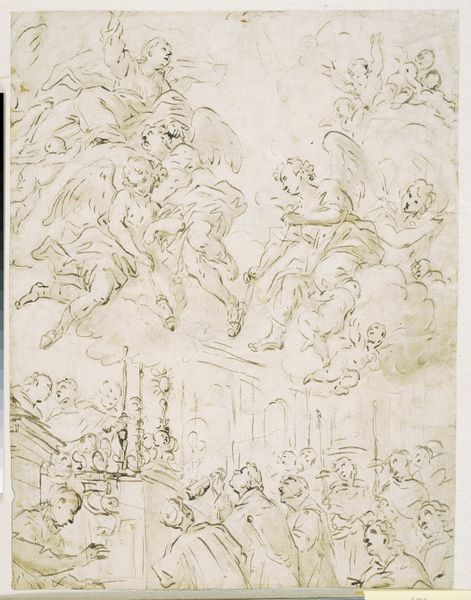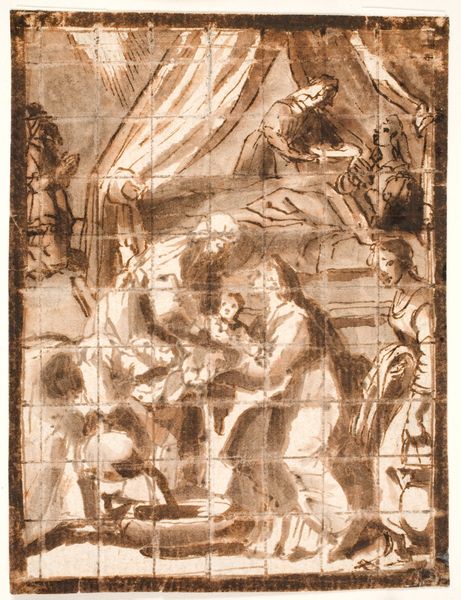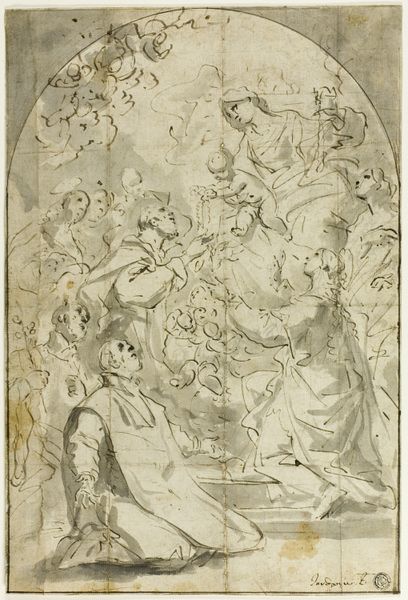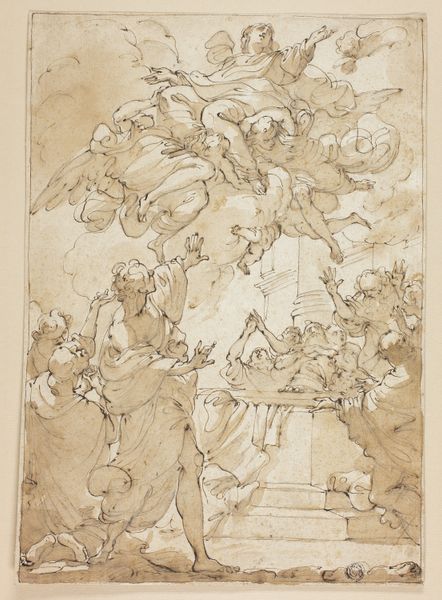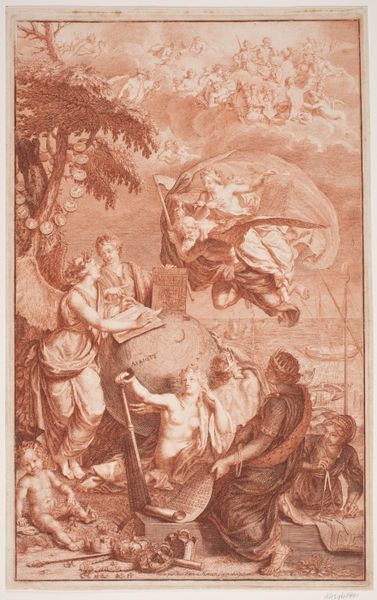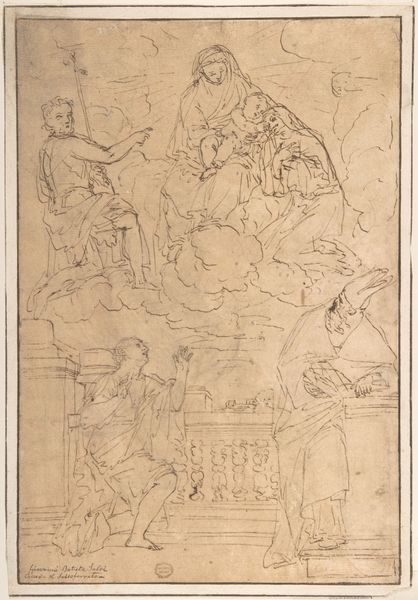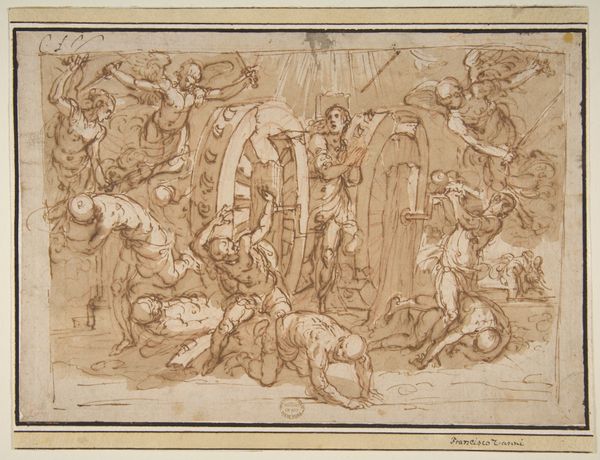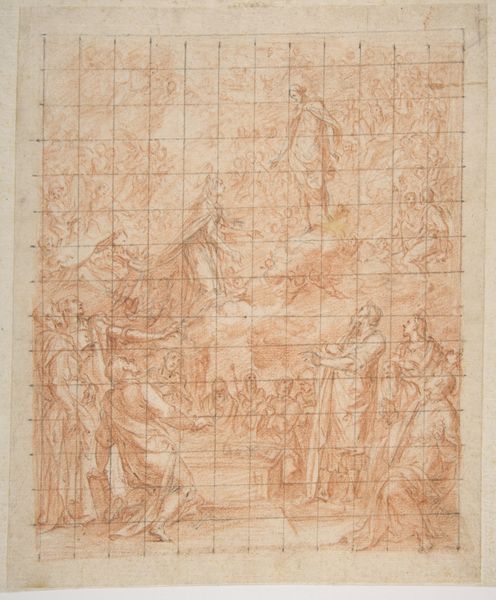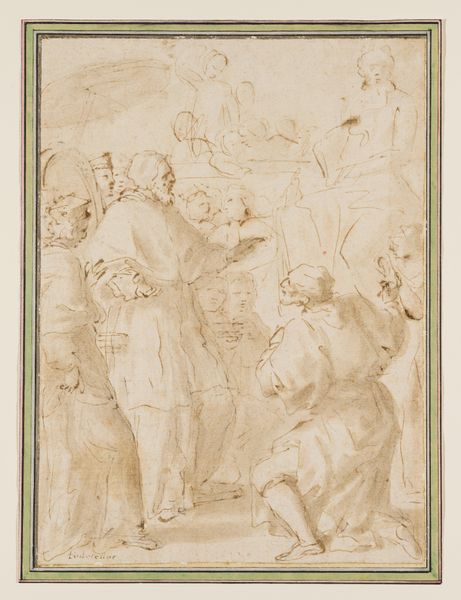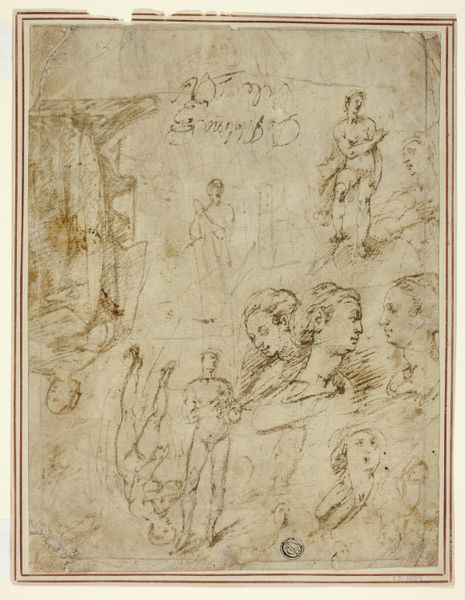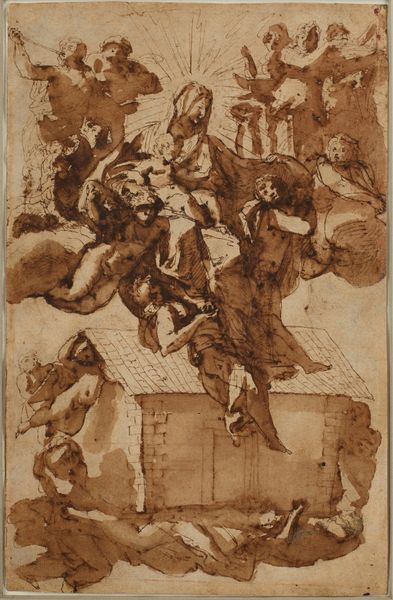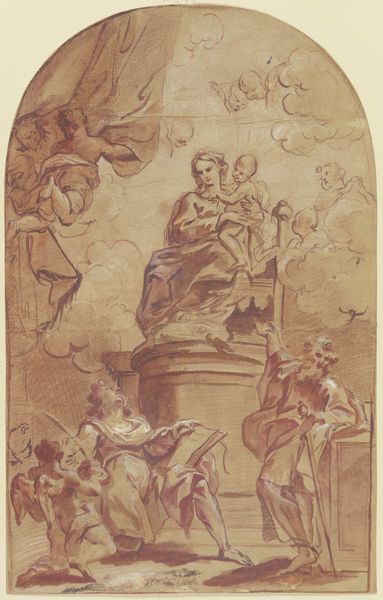
drawing, ink
#
drawing
#
figuration
#
11_renaissance
#
ink
#
history-painting
#
italian-renaissance
Dimensions: 173 mm (height) x 125 mm (width) (billedmaal)
Editor: Here we have Giovanni Battista Castello’s drawing, "Kongernes tilbedelse," made with ink around 1538-1541. The use of ink gives it a fluid yet detailed quality. I find it captivating, but also somewhat unclear, especially with the grid laid on top. How do you interpret this work, particularly in its historical context? Curator: Well, seeing those gridlines immediately makes me think about the function of this piece as a preliminary drawing, a study, likely for a larger painting or fresco. This gives it a certain intimacy – we’re seeing the artist's process, the underlying structure before the final, perhaps more polished, public statement. Think of the Renaissance's artistic patronage and the cultural weight placed on religious narratives. This "Adoration of the Magi" would have been commissioned, scrutinized, and imbued with social and political meaning beyond the purely religious. The composition, despite being a sketch, clearly designates the figures with hierarchies. Editor: Right, I see what you mean. It is as though each area delimited by the grid corresponded to a very specific proportion, and must be observed when finally represented. And thinking about Renaissance patronage, who would have been commissioning this piece, and how might that have affected the artist’s decisions? Curator: Someone within the Church or wealthy aristocracy. They dictated the subject matter, size, and overall message. The artist, while undoubtedly creative, had to cater to their patron's sensibilities and their desire to project a particular image of power and piety. Look at the positioning of the Virgin Mary and child, literally elevated above the other figures – an explicit visual cue that would reinforce religious and social hierarchies of the time. Also the adoration by kneeling and by kissing hands, quite clearly conveys the artist’s interpretation. Editor: So the drawing, even in this draft form, serves as a kind of social and religious propaganda? Curator: Precisely. And studying it helps us unravel the complex relationships between art, power, and belief in Renaissance society. Seeing the grid we understand a hidden form of control through which the work could not fail to transmit its intended meaning, despite being subject to subjective readings. Editor: This perspective has really transformed how I see the artwork, providing valuable clues about the Renaissance perception of the world and also on the artist's intentions and possibilities! Curator: And for me, remembering how something like a sketch helps unlock layers of intention, even revealing unexpected control within seeming artistic freedom, is the key benefit of understanding a work like this in its own time.
Comments
No comments
Be the first to comment and join the conversation on the ultimate creative platform.
